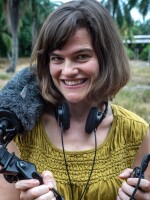The two scientists who won this year's Nobel Prize in Physiology or Medicine discovered that cells in our body have the remarkable ability to reinvent themselves. They found that every cell in the human body, from our skin and bones to our heart and brain, can be coaxed into forming any other cell.
The process is called reprogramming, and its potential for new drugs and therapies is vast. If neurons or heart cells are damaged by disease or aging, then cells from the skin or blood potentially could be induced to reprogram themselves and repair the damaged tissue.
The winners — John Gurdon of the Gurdon Institute in Cambridge, England, and Shinya Yamanaka of Kyoto University in Japan and the Gladstone Institute in San Francisco — made their discoveries more than 40 years apart.
In 1962, Gurdon proved that a cell from a frog's stomach contained the entire blueprint to make a whole frog. When he took the cell's nucleus and popped it into a frog egg, the egg developed into a normal frog.
This method eventually was used to clone all sorts of animals, including cats, dogs, horses and, most famously, Dolly the sheep — the first mammal cloned from an adult cell. Gurdon, 79, continues to study reprogramming and was working in his lab when he received the call from the Nobel committee.
But a major obstacle stood in the way of further development of these stem cells: Getting the frog's stomach cell to strip away its specialization and turn into one of the 200 or so cell types known to exist in animals always required the use of an egg.
A question hung over the field for decades: Could a specialized cell reprogram itself all on its own?

In 2006, Yamanaka and graduate student Kazutoshi Takahashi found the answer, and it sent shockwaves through biology and medicine. They demonstrated that any cell could be reset and induced to develop into another cell type. And, even more remarkably, that it took little to get the job done.
Yamanaka and Takahashi took some cells from the skin of a mouse and then switched on four specific genes. After a few weeks, the cells stopped looking like skin cells and starting looking more like embryonic stem cells. That meant the cells could then be manipulated to develop into just about any cell Yamanaka wanted. He could even get the cells to form heart muscle that beat inside a Petri dish.
Yamanaka, 50, had essentially unlocked a cellular genie in the bottle. The discovery meant that a cell wasn't necessarily trapped in its fate to be, say, a skin, liver or heart cell. Rather, with the right instructions, a cell had the ability to strip away its specialization and become whatever cell the scientists chose. They called these new cells "induced pluripotent stem cells."
The landmark finding triggered thousands of studies. Researchers quickly wanted to learn how these new stem cells could be used to treat a vast array of diseases, such as Alzheimer's, muscular dystrophy and diabetes.
Although stem cell treatments for these diseases are still quite far away, the induced pluriopotent stem cells are turning out to be invaluable tools for studying hundreds of diseases. They can serve as a platform for screening drugs or for even simply testing how a patient will respond to a particular medicine.
The discoveries by Gurdon and Yamanaka have opened up a new era in personalized medicine, where each person's own cells may one day serve not only as a reservoir for fixing damaged tissue, but also as research tools for deciphering how diseases work inside each person's unique body.
Induced pluripotent stem cells also offer a possible alternative to human embryonic stem cells, which are controversial because they are obtained from embryos.
Copyright 2021 NPR. To see more, visit https://www.npr.org.




